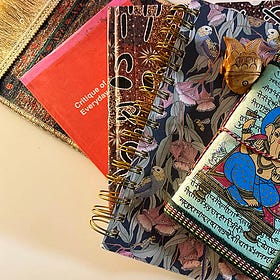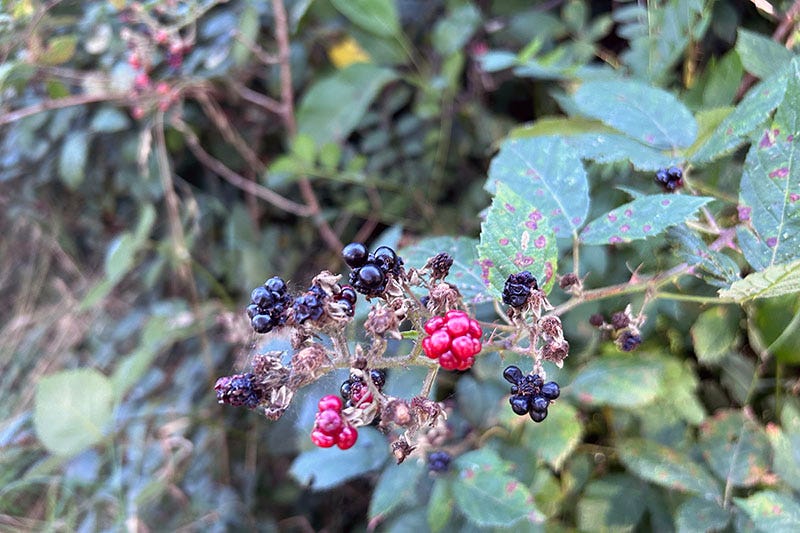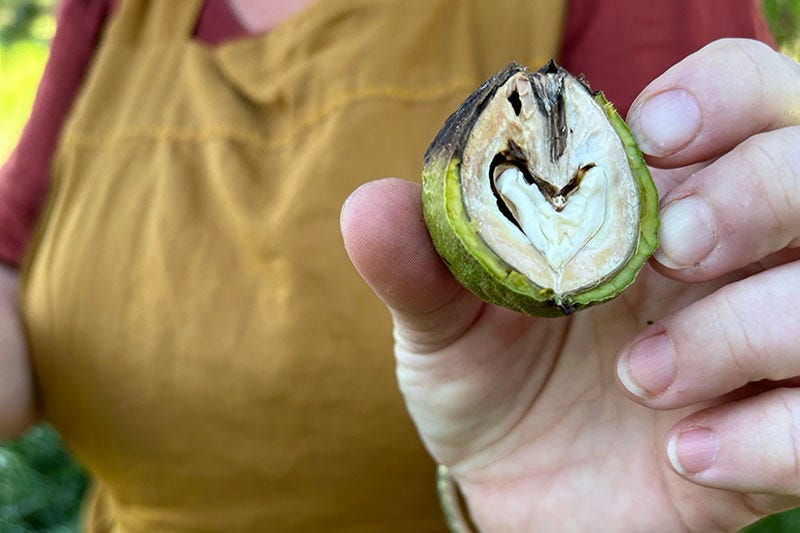Hello! I’m Celine and I write about books, cooking, gardening and surviving life in the city, with a wild heart. Subscribe for free posts like this one, or join the community for other exclusive writing. Either way, thanks for your support!
Dear Reader,
I’m currently working on a very detailed post that isn’t quite there yet - a cosy winter reading list! Being very keen to do this justice, it’ll land in your inbox next week.
Although the content contained within this week’s newsletter has been previously published, it was never delivered by email – instead it was contained within an early bumper edition post. You may have missed it, so it here it is.
I’ve also removed the paywall from the below post – it’s one of the most popular on this publication, so people are clearly keen to read it.
If journalling is something you’re interested in, I share my tips and tricks for getting started (as and aside, I recently found a bunch of old diaries from the last 12 years that were indeed in the shed. I’m glad they’re recovered, but I still don’t know how to feel about them!).
Notes on 20 years of journalling
The beauty of diarising is that it’s such a personal practice. It’s something that you can truly make your own, to dive deep into your own well of creativity and your beautiful personality. These are a few observations I’ve made over my years of journalling and some questions I’ve asked myself along the way.
And now, onto urban foraging.
Urban foraging: why there can be too much of a good thing
“It’s not just about going out and getting free shit.”
This is the first piece of advice Anna, The Urban Nanna imparts upon us – ‘us’ being five eager would-be foragers, who have journeyed out to an urban park in Melbourne’s east on an uncharacteristically hot and sunny Sunday, to learn from an expert.
Before we get down to business, the business being practical learning, the former primary teacher turned permaculture educator is giving us a breakdown on the ethics of urban foraging.
And for this, I am grateful. Urban foraging exploded in popularity during the COVID-19 pandemic. It was perhaps, the first time since World War II, that the fragility of our local food-chain was revealed. One major disaster and that could be it – our convenient access to just about every food item we desire, gone in a flash.
Unlike ‘Nanna’ Anna, I am a novice when it comes to foraging. Most of my knowledge is purely academic; out in the ‘field’ or so to speak, I’m sure I’d run a real risk of accidentally poisoning myself. But you know, this newsletter project is kinda a journey, and in turn, we’re kinda on this journey together.
So here are some of the ethics of urban foraging – or rather, foraging in general, if it’s something you’re keen on learning more about.
1. Never ever eat something unless you are certain it is safe.
This is probably the cardinal rule of foraging. Before popping anything in your gob, you need to be 100% sure that you have:
correctly identified the plant
ascertained that it hasn’t been sprayed with pesticides, peed on by a mutt, etc.
This book nerd has, of course, got you covered as far as the printed word is concerned. May I present the Weed Forager's Handbook to my Australian readers, although this would be applicable elsewhere in the world, as many of Australia’s ‘weeds’ are introduced. Eat Weeds is also an excellent option and would look very pretty on your bookshelf.
Anyway. This is why urban foraging can be dicey. You can never be sure that a local park hasn’t been sprayed by council, or that even the soil in your own backyard is safe to eat out of. This is one reason I highly recommend getting your soil tested before you grow anything out of it. Sydney’s Macquarie University run a research program called VegeSafe – you can send samples in for testing, the cost being a donation of choice. A few weeks later, you’ll receive the results. It’s how I found out my backyard soil is full of lead! Fantastic news.
Nanna Anna’s advice is, if there is even a morsel of doubt, don’t eat the thing (perhaps something I should have considered when I cooked and ate garden snails, but hey – I’m still breathing).
2. In Australia, it’s illegal to forage native & indigenous plants.
There’s definitely this ‘romantic’ idea in Oz at least of foraging and subsisting on an indigenous diet. Blame the Bush Tucker Man.
Thing is, Australian native species - both flora and fauna - are protected. It’s illegal to harvest them.
The ‘good’ news is, when the country was colonised, Europeans brought plenty of their own flora and fauna with them, to remind them of home. These invasive species now run rampant and you can help keep them at bay by foraging them to your heart’s content. Except remember…
3. When foraging, apply the ‘quarter rule’
We live in a society of over-consumption, but when it comes to foraging, a little goes a long way. Nanna Anna advised us to apply the ‘quarter rule’, when foraging. That is, to take a quarter of what’s on offer and leave 3/4s for:
the plant to survive
animals and birds who rely on the plant as part of their diet
other foragers.
We didn’t do anything to grow this stuff, so we should be respectful and thankful for it.
4. Don’t bloody trespass
There is, I would say, an unspoken rule among urban foragers – that whatever is hanging over a fence is fine to take. Council strips? Go for your life.
Yet, people often trespass, taking things that are not rightfully theirs.
I see this often with my roses. I have a handful of bushes in my front yard, that I put A LOT OF CARE into. I feed them. I water them. I lovingly prune them back in winter, so they can flourish in the warmer months. I also see people walk past, reach over my fence and SNAP MY BELOVED ROSES OFF AT THE STEM. This is stealing, everyone. If they’re on my side of the fence, leave them, for the enjoyment of myself and everyone in the local community.
Nanna Anna, who has Scandinavian ancestry, spoke of the Swedish idea of no one owning the land that we live on. Rather, you’re considered a steward of the land – you take care of it, you give and it gives back, and it flourishes, for future generations.
I love this and wish it were an idea that was prevalent in my own country, but people are weird about the ownership of land, for a bunch of reasons.
We think we live in a land of abundance. But nature is fragile and finite. We would do well to learn to give back to the land that gives us so much in return.
I’m interested to know, in turn, if you have any interest in urban foraging. Or I guess after reading this, foraging beyond our urban boundaries.
See you next Thursday, with a cosy winter reading list to keep you warm throughout the cooler months.
‘Til then, stay well and well-fed.
-Celine
If you liked this, you may also enjoy:






Scary thought isn’t it…that the soil in your own backyard could be contaminated? I wonder then if the soil has tons of worms and looks friable whether contamination is somewhat unlikely?